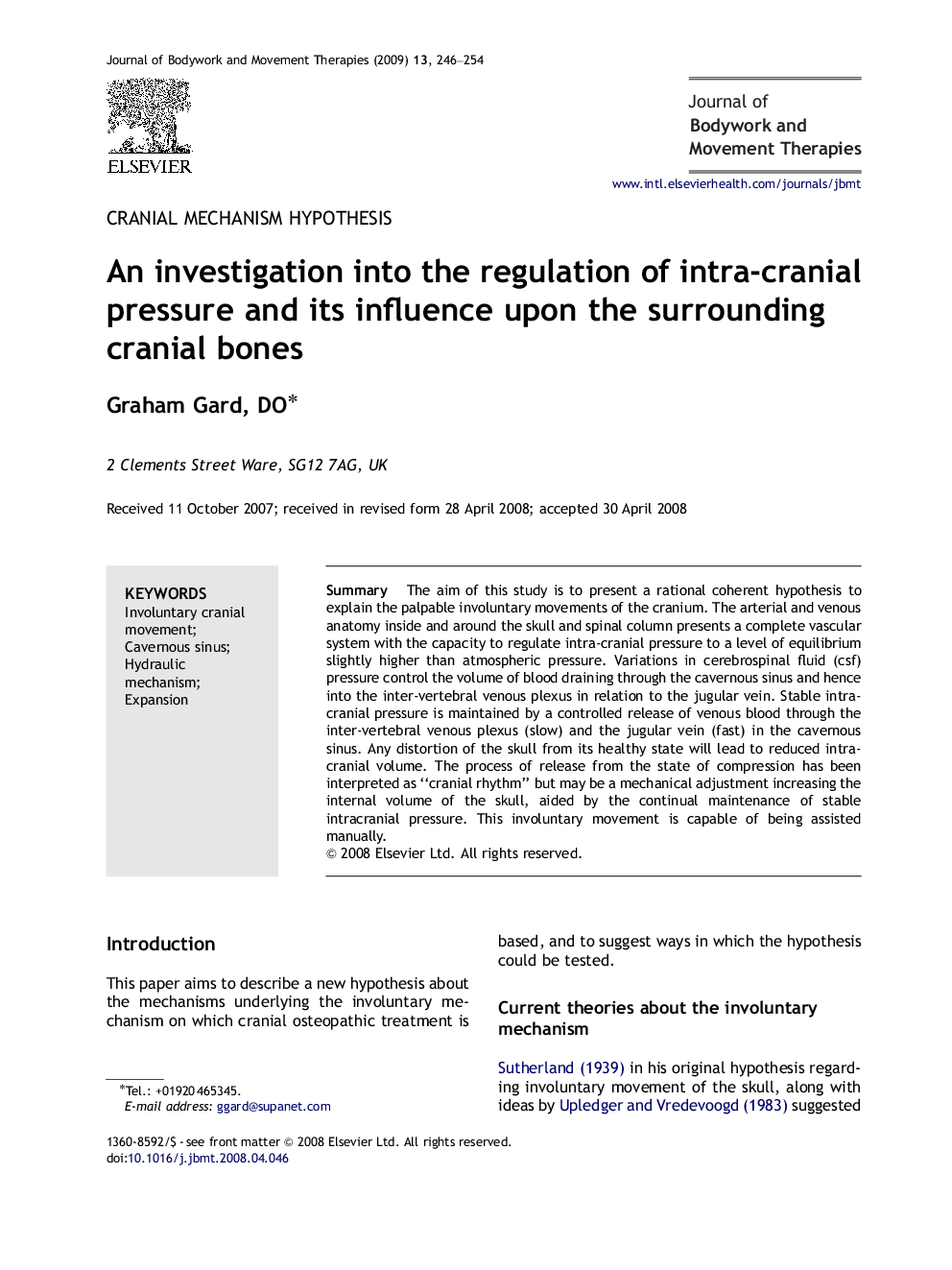| Article ID | Journal | Published Year | Pages | File Type |
|---|---|---|---|---|
| 2619625 | Journal of Bodywork and Movement Therapies | 2009 | 9 Pages |
Abstract
The aim of this study is to present a rational coherent hypothesis to explain the palpable involuntary movements of the cranium. The arterial and venous anatomy inside and around the skull and spinal column presents a complete vascular system with the capacity to regulate intra-cranial pressure to a level of equilibrium slightly higher than atmospheric pressure. Variations in cerebrospinal fluid (csf) pressure control the volume of blood draining through the cavernous sinus and hence into the inter-vertebral venous plexus in relation to the jugular vein. Stable intra-cranial pressure is maintained by a controlled release of venous blood through the inter-vertebral venous plexus (slow) and the jugular vein (fast) in the cavernous sinus. Any distortion of the skull from its healthy state will lead to reduced intra-cranial volume. The process of release from the state of compression has been interpreted as “cranial rhythm” but may be a mechanical adjustment increasing the internal volume of the skull, aided by the continual maintenance of stable intracranial pressure. This involuntary movement is capable of being assisted manually.
Keywords
Related Topics
Health Sciences
Medicine and Dentistry
Complementary and Alternative Medicine
Authors
Graham DO,
